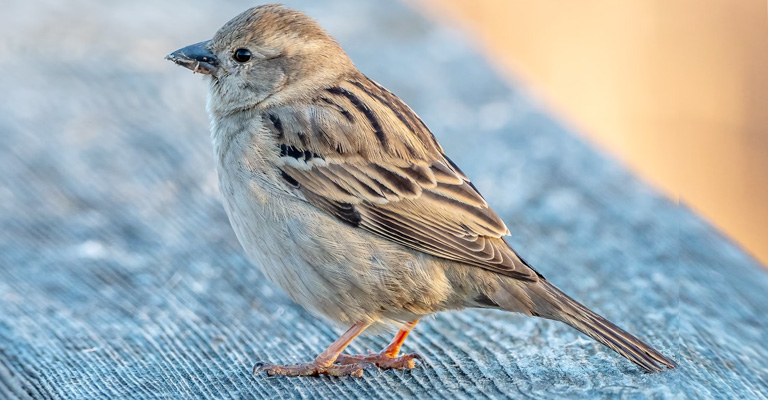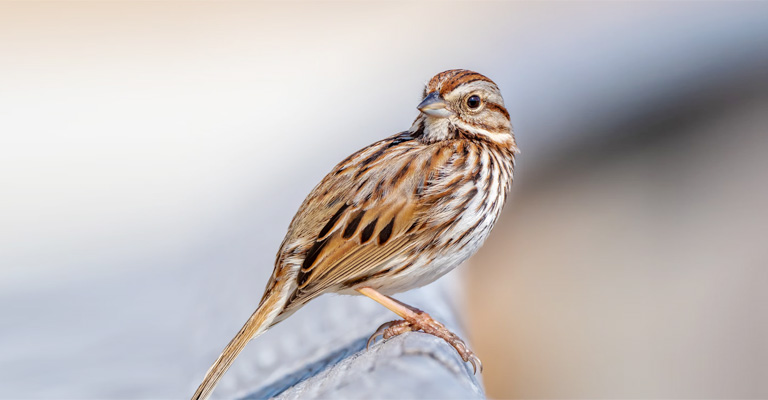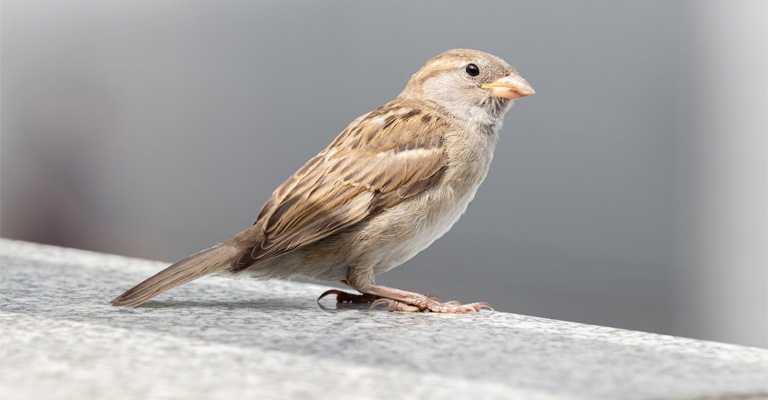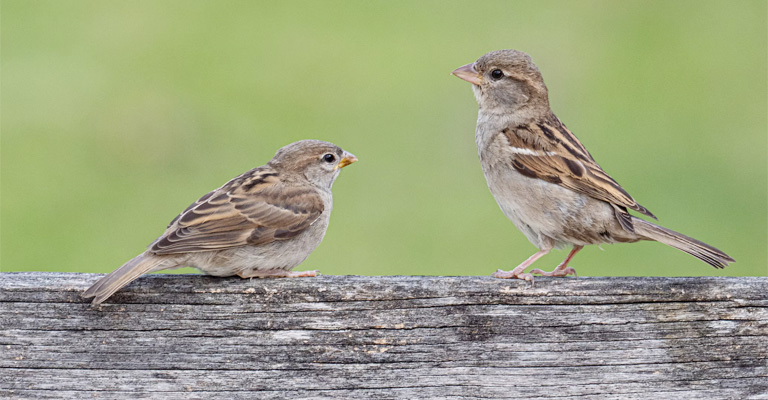In the mid-19th century, a seemingly innocuous decision was made that would forever alter the avian landscape of the United States.
House Sparrows, small and unassuming birds with a rich history of cohabitation with humans, were intentionally introduced to North American shores. But what prompted this introduction, and what were the consequences of this seemingly well-intentioned act?
This blog post delves into the intriguing story of this burning question ‘Why Were House Sparrows Originally Brought to the United States?’.
Beyond their role as “commensal” birds, these sparrows held a dual promise: to assist in controlling agricultural pests and to provide a comforting touch of the Old World for European immigrants seeking solace in unfamiliar landscapes. So, stay focused.

What Is House Sparrows?
House Sparrows, scientifically known as Passer domesticus, are small, common birds found across the globe. These sparrows belong to the family Passeridae and are often referred to simply as “sparrows.”
They are known for their distinctive appearance, characterized by brownish-gray plumage, with the males sporting a black bib-like patch on their throats during the breeding season.
House Sparrows are highly adaptable and have thrived in urban and rural environments, making them one of the most widespread bird species. They are known for their association with human habitation, frequently nesting in buildings, eaves, and cavities.
Their diet primarily consists of seeds, grains, and small insects. While House Sparrows are beloved for their cheerful chirping and frequent presence in gardens and cityscapes, their populations have faced challenges in recent years due to habitat loss and changing environmental conditions.
Conservation efforts are underway to ensure the continued presence of these charismatic little birds in our lives.
Historical Context of House Sparrows
The House Sparrow (Passer domesticus) has a rich historical context closely intertwined with human civilization. Here are some key historical aspects:
Origins and Domestication
House Sparrows are believed to have originated in the Middle East and later spread to Europe and Asia.
They have lived in close proximity to humans for thousands of years, often relying on human settlements for food and shelter. This association led to their categorization as a “commensal” species, one that benefits from human activity.
Symbolism and Cultural Significance
House Sparrows have been a part of human culture and folklore for centuries. In various societies, they symbolize different things, such as love, companionship, and even messengers of the gods. Their prevalence in urban areas made them a common sight and subject in art and literature.
Agriculture and Pest Control
House Sparrows were widely encouraged in agricultural societies for their role in pest control. Farmers valued them for helping to keep insect populations in check, and in some cultures, they were even seen as guardians of the harvest.
Introduction to North America
In the 19th century, House Sparrows were introduced to North America as part of an effort to control insect pests. They quickly adapted to the new environment and multiplied rapidly.
Population Decline
Despite their historical association with human habitats, House Sparrow populations have declined in some regions. Factors such as habitat loss due to urbanization, pollution, and changes in agricultural practices have contributed to these declines.
Conservation Efforts
The decline in House Sparrow populations in certain areas has led to conservation initiatives aimed at protecting these birds. Some cities have implemented programs to create sparrow-friendly habitats, such as providing nest boxes and maintaining green spaces.
House Sparrows have a long history of coexistence with humans, from being symbolically significant to serving practical roles in pest control.
Why Were House Sparrows Originally Brought to the United States?

House Sparrows (Passer domesticus) were originally brought to the United States in the mid-19th century for several specific reasons:
Insect Pest Control
One of the primary motivations for introducing House Sparrows to North America was to control insect pests in agricultural areas.
Farmers believed that these sparrows, which were known for their appetite for insects, would help protect crops from various pests, including caterpillars, and other crop-damaging insects. The hope was that they would act as natural pest control agents and reduce the economic losses suffered by farmers.
Familiarity
House Sparrows were already well-established in Europe and other parts of the world, and they were familiar to European settlers who were accustomed to seeing these birds around human settlements.
Introducing them to the New World would create a sense of familiarity and connection to the Old World, which many immigrants found comforting.
Aesthetic Appeal and Birdsong
House Sparrows were also appreciated for their aesthetic qualities and cheerful birdsong. Their presence added to the biodiversity of the region and contributed to the ambiance of cities and towns, making them more attractive places to live.
Symbolism
In some cases, House Sparrows were introduced as a symbol of home and hearth. These birds were associated with human habitation and were seen as a comforting presence in new and unfamiliar environments.
While the initial intentions behind introducing House Sparrows to the United States were positive, their rapid proliferation and adaptability to various habitats led to unintended consequences. They became invasive in some regions, outcompeting native bird species for resources and nesting sites.
Why House Sparrows Are America’s First “Invasive Species”?

House Sparrows (Passer domesticus) are often referred to as America’s first “invasive species” for several reasons:
Early Introduction
House Sparrows were among the first non-native bird species intentionally introduced to North America by humans. This introduction occurred in the mid-19th century, with the first documented release in Brooklyn, New York, in 1851.
This early introduction makes them one of the earliest examples of human-assisted species introductions in the United States.
Prolific Reproduction
House Sparrows are prolific breeders. They have a high reproductive rate, with multiple broods of young each year. This reproductive advantage allowed them to quickly establish and expand their populations in their new habitat, outcompeting native bird species for nesting sites and resources.
Adaptability
House Sparrows are highly adaptable birds. They are not picky about their habitats and can thrive in urban, suburban, and rural environments. Their ability to exploit a wide range of food sources and nesting sites contributed to their rapid spread across North America.
Aggressive Behavior
House Sparrows are known for their aggressive behavior, both towards other bird species and among themselves. They are territorial and often displace native birds from their nesting sites. Their aggressive behavior further contributed to their success as an invasive species.
Harm to Native Species
The presence of House Sparrows has had negative impacts on native bird species in North America. They compete with native birds for food, nesting sites, and other resources. This competition, along with their aggressive behavior, has contributed to the decline of some native bird populations.
Economic Impact
While House Sparrows were originally introduced with the hope of controlling agricultural pests, their overall impact on agriculture has been mixed. They do consume some insects, but they also damage crops by feeding on seeds and grains. Additionally, they can carry diseases that affect domestic poultry.
Widespread Distribution
House Sparrows have successfully colonized virtually the entire continent of North America. Their rapid and widespread distribution is a testament to their adaptability and invasive potential.
While House Sparrows are considered America’s first invasive species, they serve as a cautionary example of the unintended consequences that can result from introducing non-native species to new environments.
Impact of Urbanization on the Environment for House Sparrows

Urbanization has had both positive and negative impacts on House Sparrows (Passer domesticus) and their environment:
Positive Impacts
Food Availability
Urban areas often provide a consistent and abundant food source for House Sparrows. They feed on a variety of human-provided resources, including discarded food scraps, bird feeders, and insects attracted to gardens and parks. This reliable food supply can support larger sparrow populations in cities.
Nesting Sites
House Sparrows have adapted to urban environments by using man-made structures for nesting. They commonly nest in building eaves, rooftops, and cavities, which are readily available in urban areas. This adaptation allows them to thrive in cities where suitable nesting sites are abundant.
Warmer Microclimates
Urban environments tend to have slightly higher temperatures than surrounding rural areas, creating favorable microclimates for House Sparrows. This can enhance their breeding success and survival during harsh winter months.
Negative Impacts
Habitat Loss
As cities expand, natural habitats are often replaced by buildings, roads, and concrete. This leads to habitat loss for many bird species, including House Sparrows. While they adapt to nesting in urban structures, the overall reduction in green spaces can limit their foraging opportunities.
Competition with Other Species
In urban areas, House Sparrows often compete with native bird species for food and nesting sites. Their aggressive behavior can displace other birds, potentially leading to declines in native populations.
Pollution
Urban environments are often associated with higher levels of pollution, including air pollution and contaminants in water. Prolonged exposure to pollutants can negatively affect the health of House Sparrows and reduce their reproductive success.
Predation
Urban environments can host a higher density of predators like cats and hawks. These predators can pose a threat to House Sparrows and their nests, limiting their survival rates.
Light Pollution
Artificial lighting in cities can disrupt the natural behaviors of House Sparrows. Excessive light at night may affect their breeding and feeding patterns.
Climate Change
While not exclusive to urban areas, climate change can impact House Sparrows and their environment. Shifts in temperature and precipitation patterns can affect food availability and nesting conditions.
Urbanization has created both opportunities and challenges for House Sparrows. While they have adapted to urban environments and benefited from some aspects of city life, they also face threats such as habitat loss, competition, pollution, and predation.
FAQs
Why were House Sparrows brought to the United States in the 19th century?
House Sparrows were introduced to the United States in the 19th century primarily to control agricultural pests. They were seen as valuable allies in reducing insect populations that damaged crops, making them a potential solution to protect agricultural yields.
Were there other reasons for introducing House Sparrows to the U.S.?
Yes, besides pest control, House Sparrows were introduced for their familiarity and aesthetics. European immigrants wanted to feel connected to their homeland, so bringing over a familiar bird also served a symbolic purpose, adding a touch of home to their new surroundings.
How successful were House Sparrows in controlling pests in the United States?
While House Sparrows do consume insects, they were not as effective as originally hoped in pest control. They also fed on grains and seeds, leading to damage to crops. Their overall impact on pest populations was limited compared to native predators and parasites.
Did the introduction of House Sparrows have unintended consequences?
Yes, the introduction of House Sparrows had unintended consequences. They rapidly expanded their populations, outcompeting native bird species for resources and causing declines in some native bird populations. Their adaptability and aggressive behavior made them a challenging invasive species.
What is the current status of House Sparrows in the United States?
House Sparrows are now widespread throughout the United States. While they have become a common sight in urban and suburban areas, their populations have stabilized, and they are no longer considered an effective means of pest control. They are often seen as both a familiar and invasive species in the U.S.
Wrapping Up
House Sparrows stand as a testament to the complex relationship between humans and the environment. Their introduction, with noble intentions, became a significant chapter in the history of invasive species.
While they continue to thrive in urban areas across the United States, their presence serves as a reminder of the delicate balance between our actions and their far-reaching consequences in the natural world.
The story of House Sparrows in the United States underscores the importance of thoughtful conservation practices, a topic that continues to evolve in our ever-changing world. Thank you for your support.